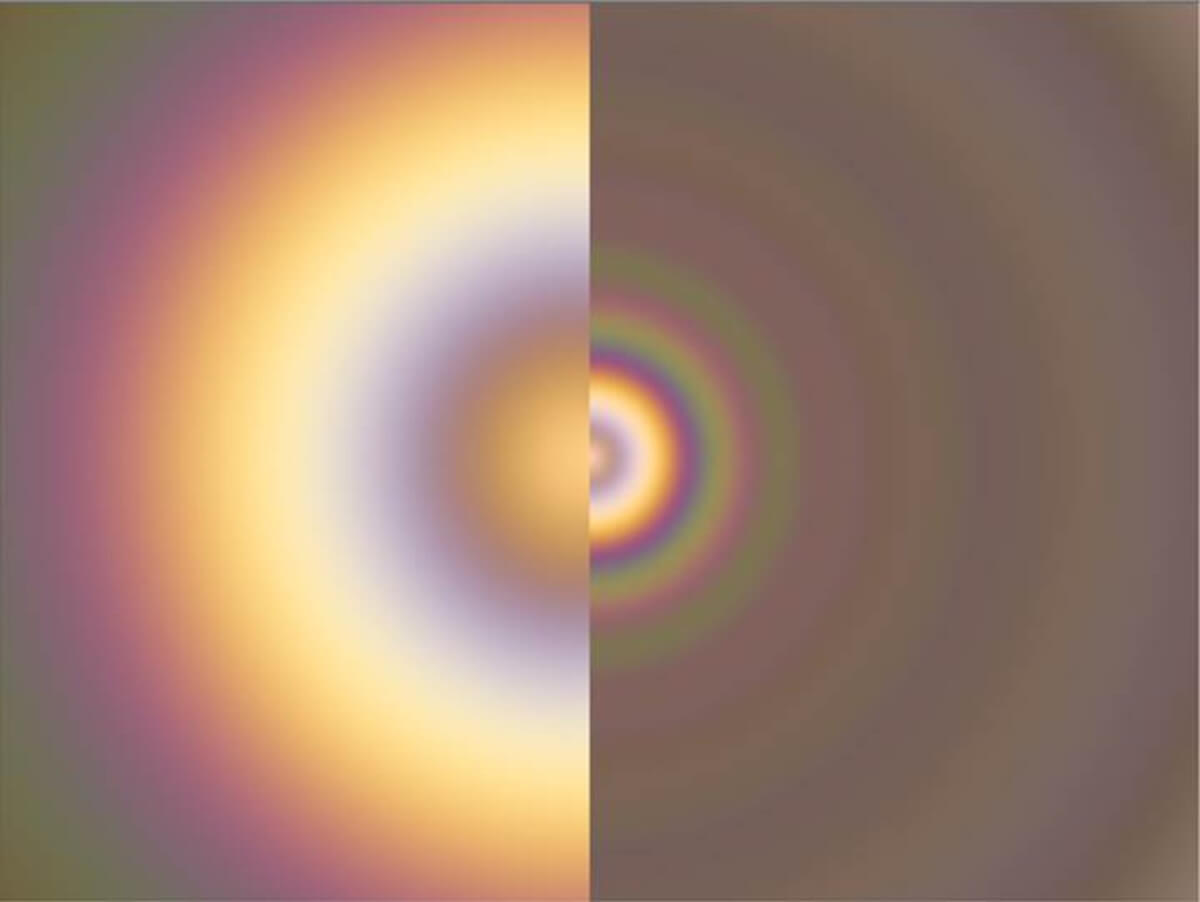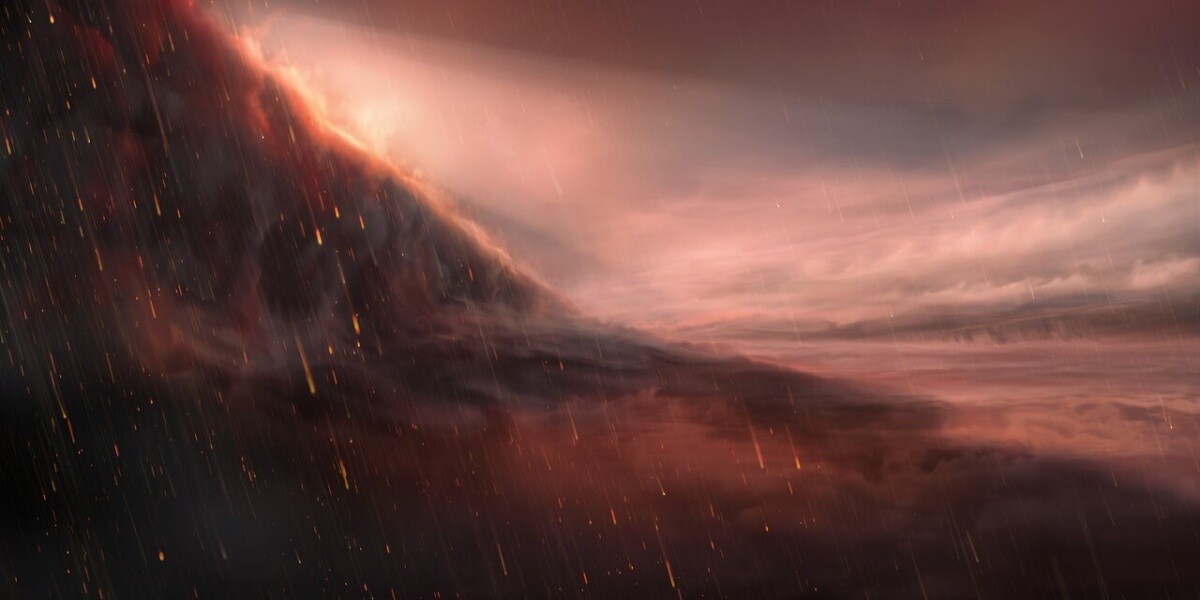
Each glory is unique, depending on the composition of the planet's atmosphere and the colors in the starlight that shines onto it. WASP-76 is a yellow-white main sequence star like our own, but different stars create glory with differing colors and patterns. (CREDIT: ESA, work performed by ATG under contract for ESA. CC BY-SA 3.0 IGO)
COVENTRY, England — Astronomers have discovered potential evidence of a phenomenon known as the “glory” effect on a planet beyond our solar system, a first-of-its-kind observation that might shed light on the habitability of distant worlds.
The so-called “glory light” effect is a fascinating phenomenon that looks like rings of light surrounding a central bright spot. This happens when light from a star (like the Sun) is scattered in a specific way by tiny particles in the atmosphere of a planet or moon. These particles bend the light, creating a series of colorful, concentric circles. It's similar to seeing a rainbow around your shadow when you're looking opposite the sun on a misty day, except this occurs on a much larger scale and can be seen from space.
The effect has only once been found on another planet – Venus – meaning that, if confirmed, this is the first “glory” ever to be detected outside our solar system.
Scientists from the University of Warwick believe the effect occurred on a planet called WASP-76b, located some 637 light years away from Earth. First discovered in 2013, WASP-76b, which is nearly double the size of Jupiter, is known for its “hellish” atmosphere.

“Never before have we seen these colorful, concentric rings on an extrasolar body,” says co-author Dr. Thomas Wilson in a statement. “So, if confirmed with future studies, this first exoplanetary glory would make WASP-76b a truly unique body - and give us a beautiful tool for understanding the atmospheres of distance exoplanets and how habitable they could be.”
One side of the planet always faces the sun, reaching an unbearably hot temperature of 2,400 degrees Celsius. Conversely, one side always faces away from the sun, living in an “endless” night where clouds drip iron molten rain.
However, observations from the European Space Agency’s Characterising Exoplanet Satellite (CHEOPS) suggest that there may be a “glory” between these two sides.
“There's a reason no glory has been seen before outside our solar system – it requires very peculiar conditions,” says lead author Dr. Olivier Demangeon, from the Institute of Astrophysics and Space Sciences in Portugal. “First, you need atmospheric particles that are close-to-perfectly spherical, completely uniform, and stable enough to be observed over a long time. Then, the planet's nearby star needs to shine directly at it, with the observer at just the right orientation.”
The groundbreaking discovery of WASP-76b was made after scientists recorded 23 observations over three years as it passed before and around its Sun-like star. Data collected showed a surprising increase in light coming from the planet’s eastern “terminator” – the boundary where night meets day. This allowed astronomers to determine the origin of the signal.

“This is the first time that such a sharp change has been detected in the brightness of an exoplanet,” explains Dr. Demangeon. “This discovery leads us to hypothesize that this unexpected glow could be caused by a strong, localized, and directionally dependent reflection – the glory effect.”
He says that the next step would be to use NASA's James Webb Space Telescope (JWST) to confirm this is the “glory effect officially.
“Confirmation would imply that the temperature of WASP-76b’s atmosphere must be stable over time, enabling the presence of clouds made up of perfectly spherical water droplets crucial to glory formation,” Dr Demangeon concludes.
SWNS writer Imogen Howse contributed to this report.











The Heavens declare God's glory daily.
Amen!
Something about a cosmic glory hole?
Did they find out what standard of living they have?
You need to disclose that the rendering is an artist conception. This is misleading as it implies that the image was captured.
You would have to be dismally ignorant to believe one could capture a close up view of a planet's surface from 637 light years away.
Illustration at top is a photo or not? it says underneath:
“(CREDIT: ESA, work performed by ATG under contract for ESA. CC BY-SA 3.0 IGO)”
No idea what that means.
Other than that, the only two other illustrations are a “simulation” and an “artist's impression.
So, there is no photo? Or is the lead image an actual photo of the planet ? or is it a “work”?
And some people say there is no God...
Can't see a planet that far away ... silliness:overdrive